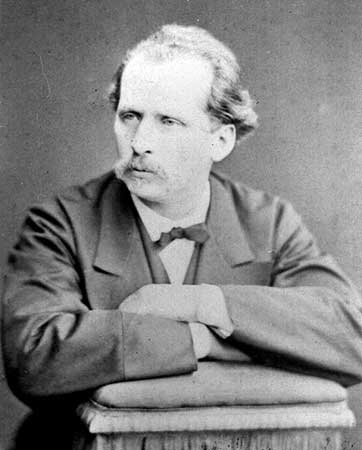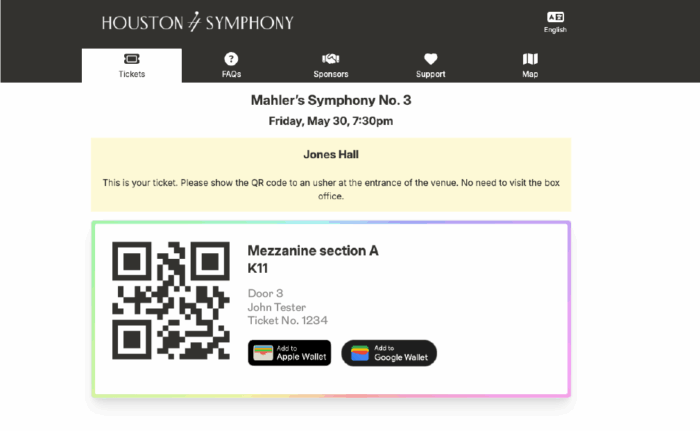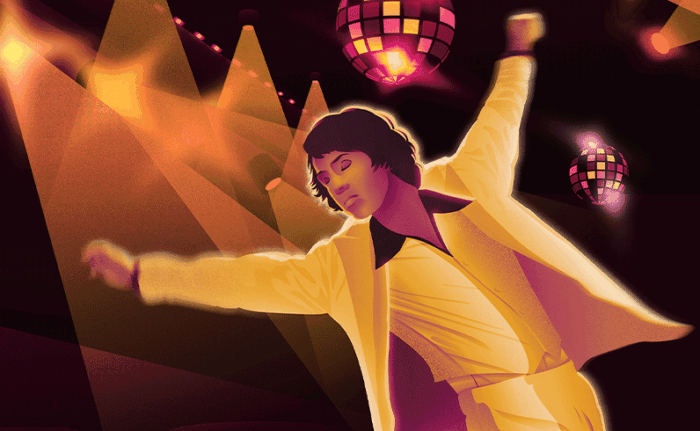This January, the Houston Symphony presents its Riots & Scandals Festival, a two-week festival highlighting works that scandalized the artistic establishments of their day. The program on January 20, 21 & 22 features Stravinsky's Rite of Spring and Tchaikovsky's Piano Concerto No. 1, played by the sensational Khatia Buniatishvili. Read on to discover one of history’s most popular (and unconventional) masterpieces.
You Can't Please Everyone
Today, Tchaikovsky's Piano Concerto No. 1 is one of the most popular pieces of its kind, but it initially met with a rocky start. In November 1874, Tchaikovsky wrote to his brother Anatoly, “I am now immersed in the composition of a Piano concerto. I definitely want Rubinstein to play it at his concert; it's going with much difficulty...” Aged 34, he was at this time working as a professor at the still new Moscow Conservatory, and the Rubinstein he mentioned was Nikolai Rubinstein, the famous pianist and head of the Conservatory (thus, Tchaikovsky’s boss). Despite the “difficulty” with which the piece progressed, Tchaikovsky was able to complete it the following month, and he played through the new concerto for Rubinstein and some friends on Christmas Eve.
“I played the first movement,” Tchaikovsky recalled. “Not a word, not an observation! […] Rubinstein was preparing his thunder.” After Tchaikovsky finished, Rubinstein declared that the concerto “was worthless, that it was impossible to play it, that its passages were clumsy, awkward, so awkward that they could not be corrected, that as a composition it was bad, that I stole from here and there, that there are only two or three pages worth preserving […]” Undaunted, Tchaikovsky refused to change “a single note.”
Instead Tchaikovsky sent the concerto to the eminent pianist and conductor Hans von Bülow. Bülow loved it, and declared that the concerto “displays such brilliance, and is such a remarkable achievement among your musical works, that you have without doubt enriched the world of music as never before. There is such unsurpassed originality, such nobility, such strength, and there are so many arresting moments throughout this unique conception; there is such a maturity of form, such style—its design and execution, with such consonant harmonies, that I could weary you by listing all the memorable moments which caused me to thank the author—not to mention the pleasure from performing it all. In a word, this true gem shall earn you the gratitude of all pianists.” Bülow gave the world premiere in Boston the following October, and it was wildly applauded by the American audience. A few years later Rubinstein changed his mind about the piece and performed it himself. Tchaikovsky was “very, very pleased” by his change of heart.
Later, Tchaikovsky did make a few revisions to the concerto; the version we know today was prepared during the winter of 1888–89 in collaboration with the pianist Alexander Siloti (who was, incidentally, Rachmaninoff’s cousin). Tchaikovsky wrote to Siloti that he left the concerto’s “fate to your discretion regarding everything except form. [in other words, no cuts and no reordering sections of the piece] You can edit the piano part as you like, change the markings (but leave my new markings, please), and I will be incredibly grateful to you for proofreading.” It is thus difficult to know how many of the changes to this edition are Tchaikovsky’s and how many are Siloti’s. In any case, Tchaikovsky seems to have trusted Siloti’s judgment, and this is the version of the concerto that is nearly always performed today.
The Music
The passionate, emotional first movement is notable for its unconventional form, which is freer and more rhapsodic than usual for a concerto of this era. This departure from tradition may have been part of what provoked Rubinstein’s ire, but it likely also stoked Bülow’s admiration; Tchaikovsky's fantasia-like approach gives the movement a subjective, personal quality. It begins with one of his most famous melodies:
After the theme is first introduced, the piano attempts to play its own version, but soon falls prey to darker thoughts expressed through virtuoso piano writing, a pattern that recurs throughout the movement. The orchestra brings the soloist back on course for a reprise of the grand, introductory theme, which never returns thereafter. Instead, the music slows, and we are introduced to three main themes: the first, introduced by the piano, is a nervous Ukrainian folksong that Tchaikovsky once heard sung by a blind beggar; the second is a melancholy theme that first appears in the clarinets; a gentle, more hopeful third theme is introduced by strings. Instead of appearing sequentially (as would be typical), the latter two themes notably appear in alternation with each other. The music drifts from one to the other, interrupted by another emotional passage from the soloist.
The orchestra initiates the development with an intense crescendo based on the once gentle third theme. The soloist then reenters to develop the melancholy second theme, freely inverting its beginning in a long, yearning crescendo with the orchestra. The horns interrupt with the third theme, and the ensuing development seamlessly transforms into a reprise of the Ukrainian folksong. After a reprise of the melancholy second theme, the soloist has a cadenza—an extended, unaccompanied solo passage—that develops the second and third themes. The movement ends with the optimistic return of the gentle third theme, which builds to a thrilling conclusion.
The slow second movement begins with a delicate melody for solo flute (derived from the melancholy second theme of the first movement). Subtly—yet significantly—altering one note, the piano takes up the theme, and is later joined by two solo cellos. The tempo then picks up for a fast, contrasting middle section. Tchaikovsky's brother Modest wrote that the strings’ melody in this section is taken from a popular French song, “Il faut s'amuser, danser et rire” (“One must have fun, dance and laugh”): “together with brother Anatoly we […] sang [it] constantly during the early seventies.” The slow first theme then returns, appearing in the piano then the oboe, before the movement fades away.
Paralleling the first movement, the third movement begins with a lively melody based on another Ukrainian folksong. The Ukrainian inspiration may stem from a visit Tchaikovsky made to Kiev while composing the concerto, but he may also have heard these folksongs during one of his many summertime visits to his sister's family in modern-day Ukraine. A singing, contrasting melody appears soon after in the violins. With some variations and interpolations, the two themes alternate; the singing second theme first appears in the expected D-flat major (the relative major of B-flat minor, the home key), then in E-flat major, a key just one step from B-flat major on the circle of fifths. The trajectory of parallel minor to major is often used by composers to bring resolution to the end of a piece, but the progressive evolution of this theme through different keys is an ingenious and original technique from Tchaikovsky. After a grand crescendo and virtuoso octaves for the soloist (brace yourself), the theme returns for the last time, now played by the entire orchestra in B-flat major. The music then races to its end.
Don't miss this spectacular performance by Khatia Buniatishvili January 20, 21 & 22! Learn more & get tickets.
This blog was originally published on October 25, 2019





